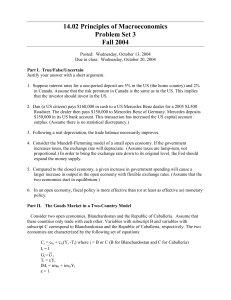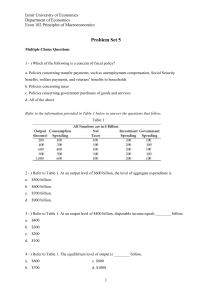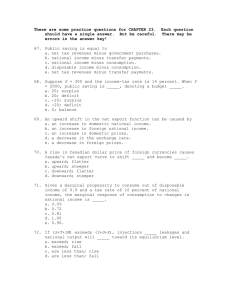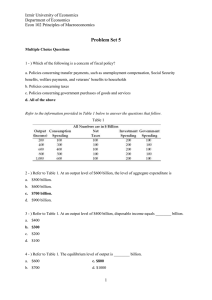Economics 201 Fall 2010 Introduction to Economic Analysis Jeffrey Parker
advertisement
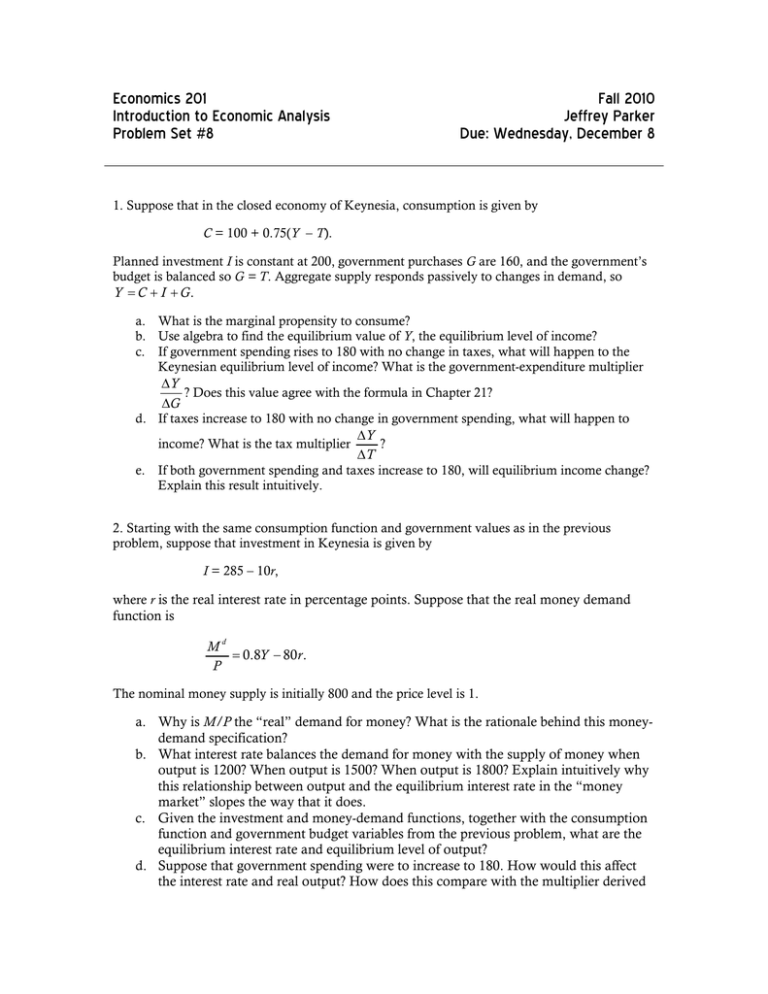
Economics 201 Introduction to Economic Analysis Problem Set #8 Fall 2010 Jeffrey Parker Due: Wednesday, December 8 1. Suppose that in the closed economy of Keynesia, consumption is given by C = 100 + 0.75(Y – T). Planned investment I is constant at 200, government purchases G are 160, and the government’s budget is balanced so G = T. Aggregate supply responds passively to changes in demand, so Y = C + I + G. a. What is the marginal propensity to consume? b. Use algebra to find the equilibrium value of Y, the equilibrium level of income? c. If government spending rises to 180 with no change in taxes, what will happen to the Keynesian equilibrium level of income? What is the government-expenditure multiplier ΔY ? Does this value agree with the formula in Chapter 21? ΔG d. If taxes increase to 180 with no change in government spending, what will happen to ΔY ? income? What is the tax multiplier ΔT e. If both government spending and taxes increase to 180, will equilibrium income change? Explain this result intuitively. 2. Starting with the same consumption function and government values as in the previous problem, suppose that investment in Keynesia is given by I = 285 – 10r, where r is the real interest rate in percentage points. Suppose that the real money demand function is Md = 0.8Y − 80r . P The nominal money supply is initially 800 and the price level is 1. a. Why is M/P the “real” demand for money? What is the rationale behind this moneydemand specification? b. What interest rate balances the demand for money with the supply of money when output is 1200? When output is 1500? When output is 1800? Explain intuitively why this relationship between output and the equilibrium interest rate in the “money market” slopes the way that it does. c. Given the investment and money-demand functions, together with the consumption function and government budget variables from the previous problem, what are the equilibrium interest rate and equilibrium level of output? d. Suppose that government spending were to increase to 180. How would this affect the interest rate and real output? How does this compare with the multiplier derived above when investment was held constant? What is the intuition behind this difference? e. Treating P as a variable, find the equation for the aggregate-demand curve relating Y to P when G = T = 160, and M = 800. 3. The current macroeconomic situation features nominal interest rates near zero, high unemployment, lagging GDP recovery after a steep recession, and low inflation. a. Do you think expansionary policy actions are appropriate? (Remember that policy actions often take 1–3 years before they have their full effect on the economy.) b. If expansion is appropriate, which is the more promising policy lever to use under today’s conditions, monetary policy or fiscal policy? Why?




